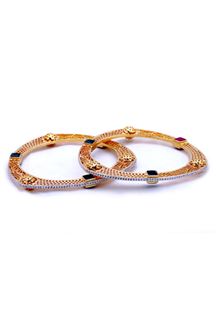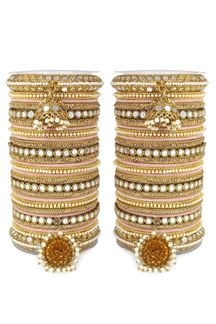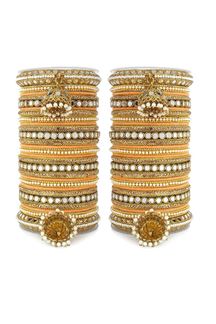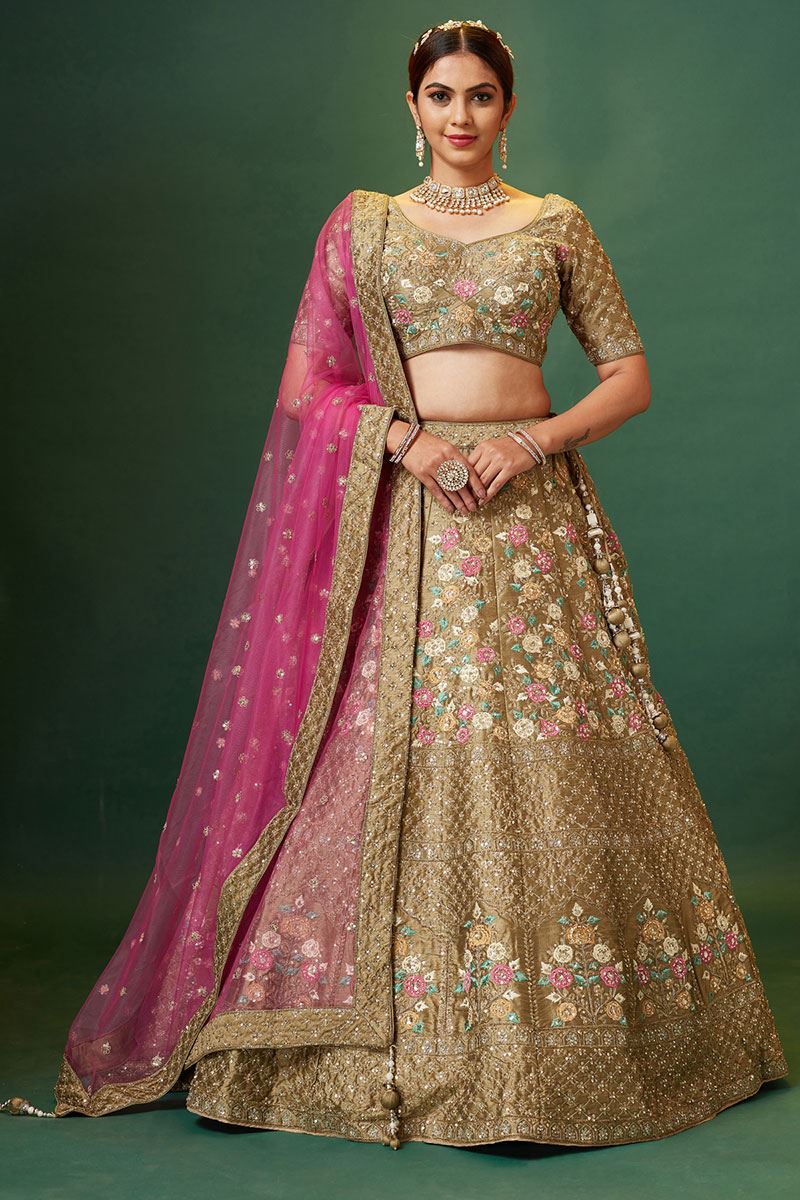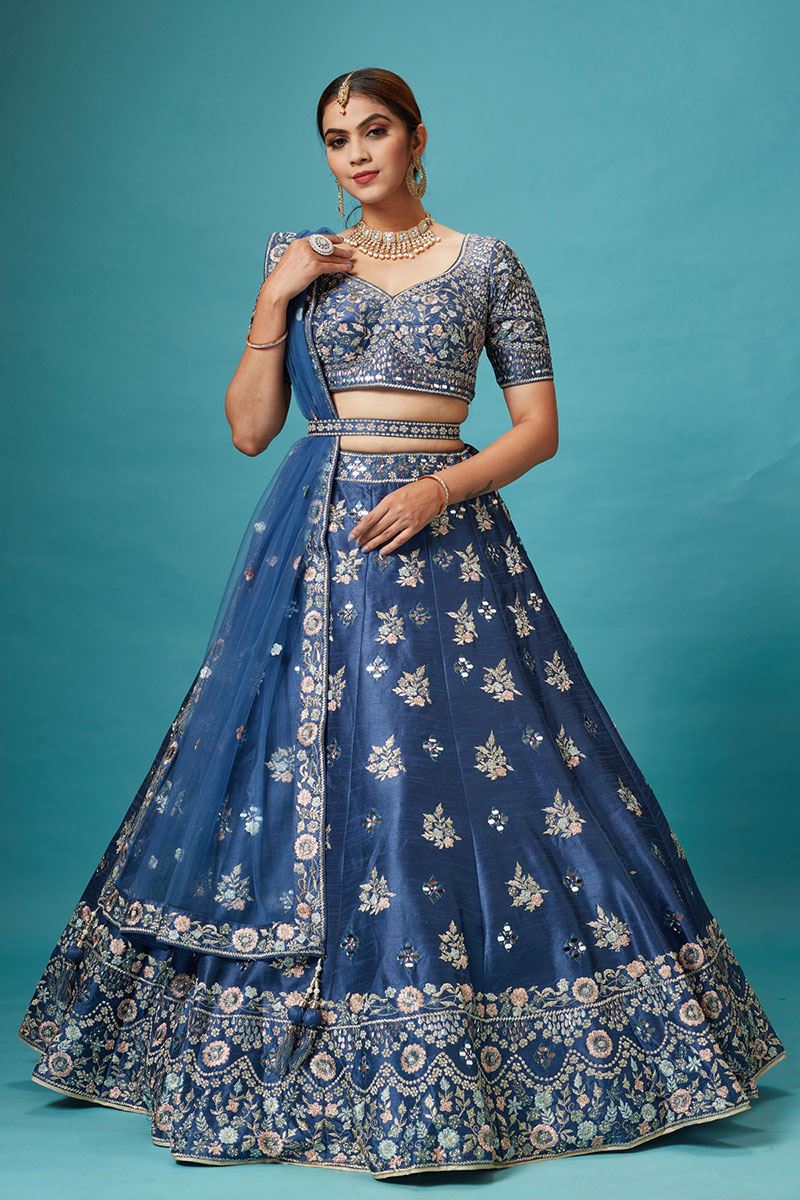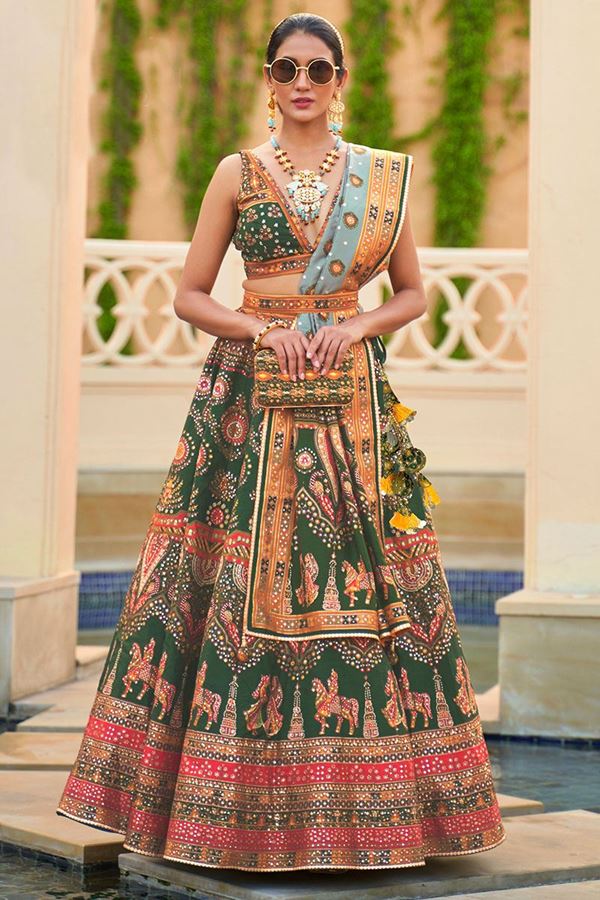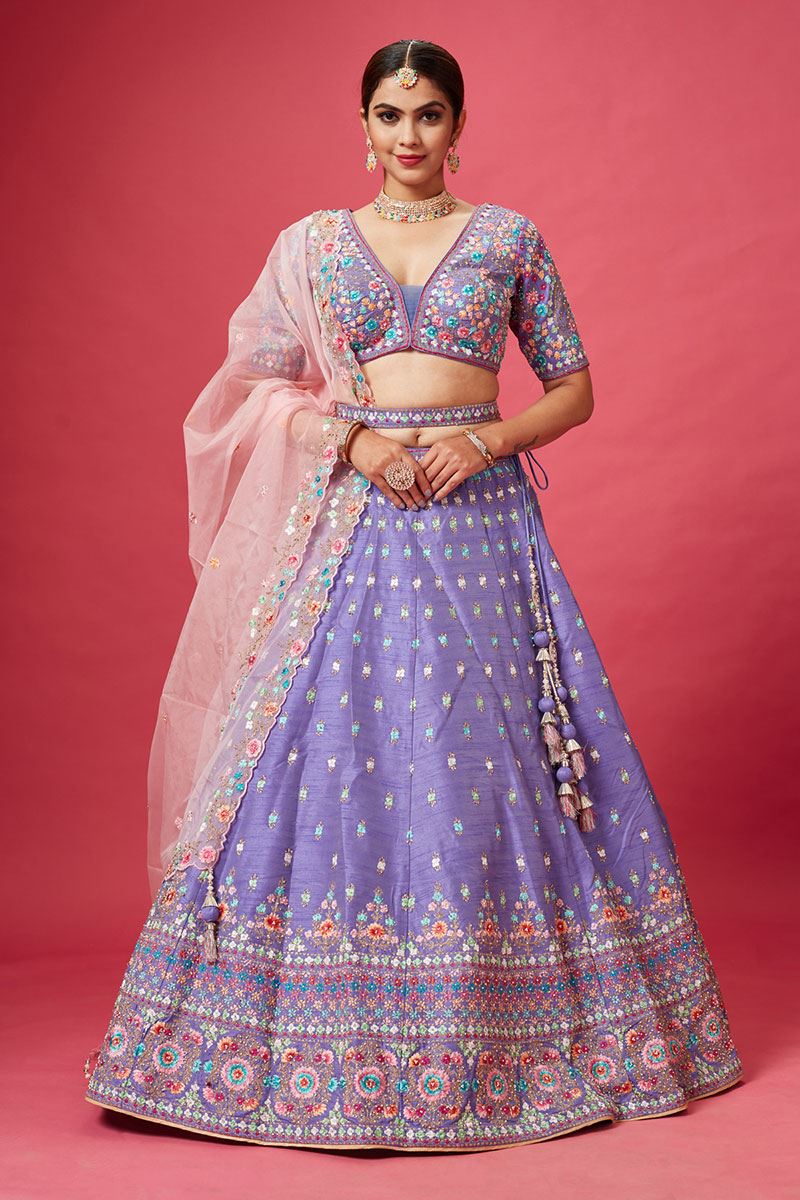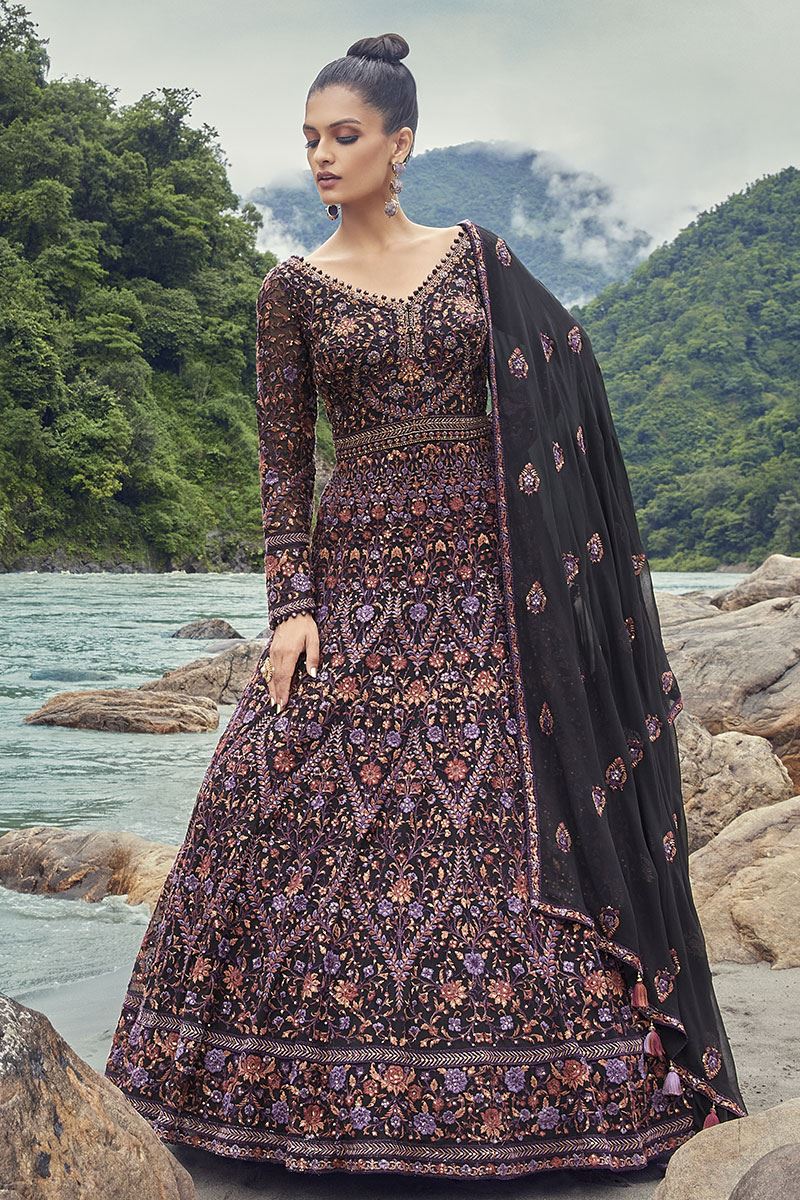Lehenga for wedding
Lehengas are a popular choice for weddings in many parts of India and among Indian communities worldwide. They are elegant and traditional outfits that come in various styles, colors, and designs. They are known for their elegance, traditional charm, and intricate designs. When choosing a lehenga for a wedding, there are several factors to consider, including the bride's personal style, the wedding theme, and cultural traditions. Here are some tips to help you select the perfect lehenga for a wedding: When selecting a lehenga for a wedding, there are several factors to consider:
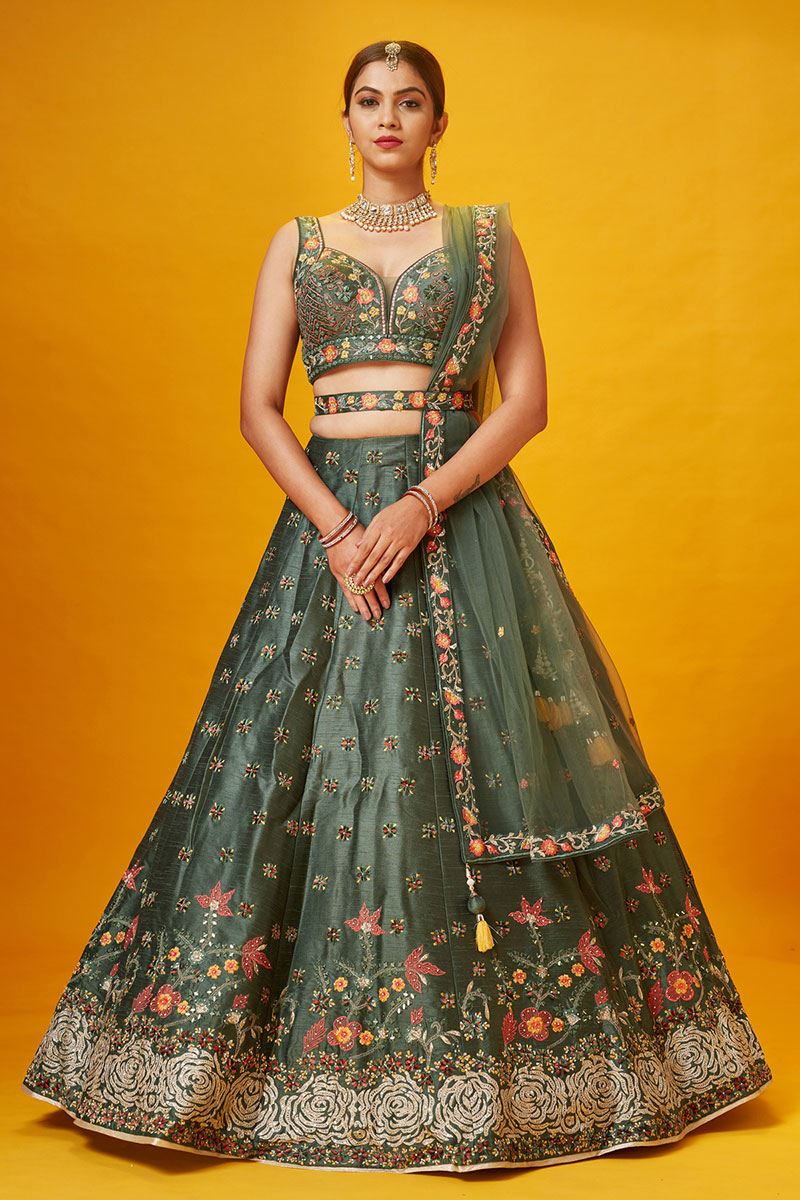
-
Color: Traditional bridal lehengas often come in vibrant colors like red, maroon, or shades of pink. However, modern brides are also experimenting with pastels, gold, and other hues. Consider the color that complements your skin tone and matches the overall color scheme of the wedding.
-
Fabric: Choose a fabric that suits the season and your comfort. For winter weddings, you can opt for heavy fabrics like silk or velvet, while lighter fabrics like georgette or chiffon are suitable for summer weddings.
-
Embroidery and Work: The level of embroidery and embellishments on your lehenga depends on your personal preference and the formality of the wedding. Intricate zari, zardozi, or sequin work can make your lehenga stand out.
-
Silhouette: Lehengas come in various styles, including A-line, mermaid, flared, and straight-cut. Select a silhouette that complements your body type and comfort. A-line lehengas are universally flattering, while mermaid lehengas are more fitted and glamorous.
-
Blouse Design: Pay attention to the design of the blouse or choli that accompanies your lehenga. You can choose from various necklines, sleeve lengths, and back designs to create a unique look.
-
Dupatta: The way you drape your dupatta can significantly affect your overall appearance. You can drape it over your head, on one shoulder, or in a trendy way to add a modern touch to your traditional outfit.
-
Accessories: Select jewelry, shoes, and other accessories that complement your lehenga. Heavy bridal jewelry like a necklace, earrings, and bangles can enhance your look.
-
Hairstyle and Makeup: Coordinate your hairstyle and makeup with your lehenga. Consider consulting a professional makeup artist to achieve a flawless bridal look.
-
Budget: Set a budget for your bridal lehenga, keeping in mind that the cost can vary widely depending on the designer, fabric, and level of detailing.
-
Cultural Considerations: If you have specific cultural or regional preferences, ensure that your lehenga aligns with those traditions. Different regions in India have their own distinct bridal attire.
-
Fittings and Alterations: Make sure your lehenga is tailored to fit you perfectly. Plan for fittings and alterations well in advance of the wedding day.
-
Personal Style: Ultimately, choose a lehenga that reflects your personal style and makes you feel comfortable and confident on your special day.
Lastly, don't forget to try on various lehengas and explore different styles to find the one that makes you feel confident and beautiful on your special day. Shopping for a wedding lehenga can be an exciting and memorable experience, so enjoy the process!


 +1 323 315 2595
+1 323 315 2595  +44 11621 61404
+44 11621 61404 
 shopping bag
shopping bag



